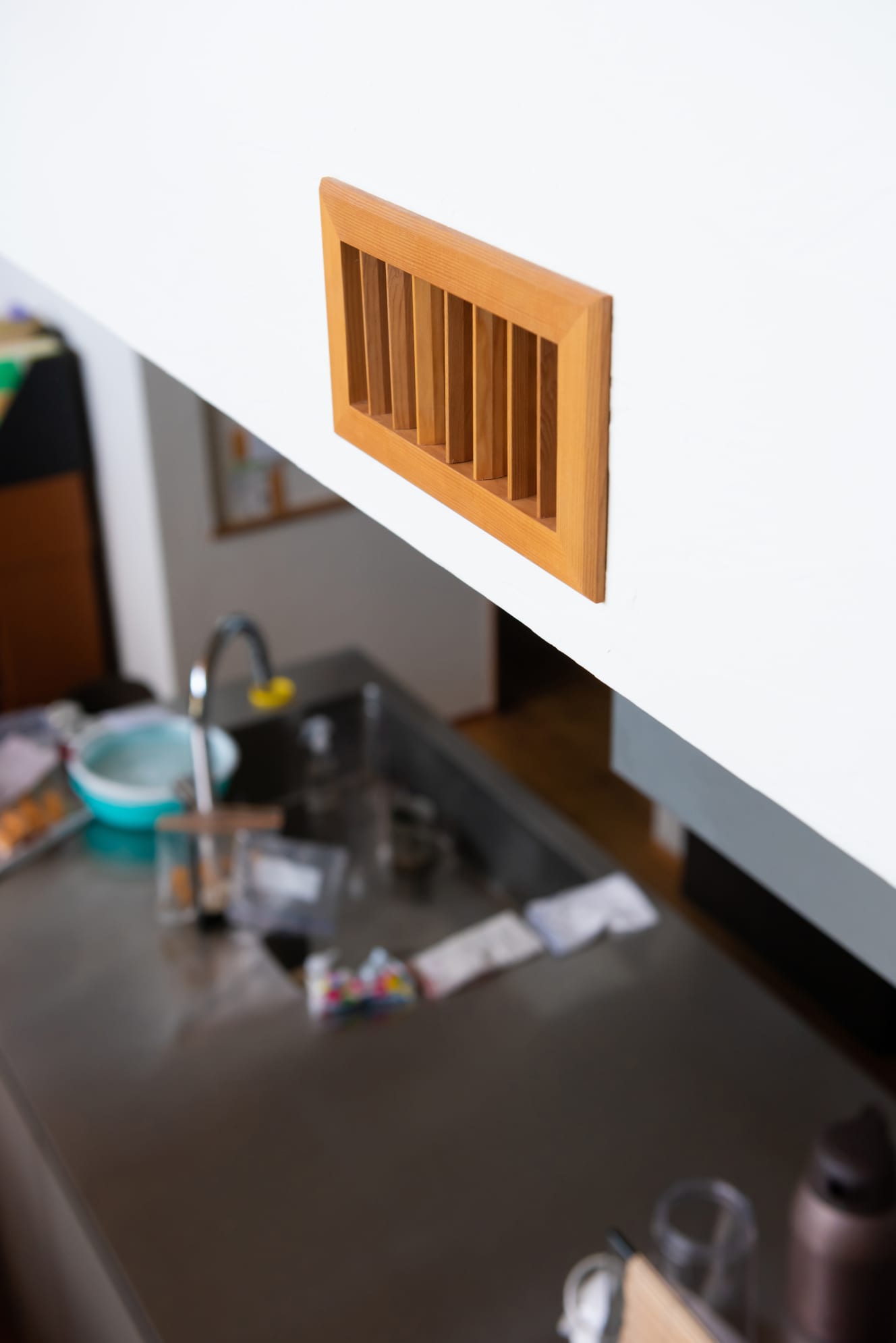In summer, another air conditioner sends cold air from a vent near the ceiling. One air conditioner each for summer and winter keeps the 190 ㎡ interior at a comfortable temperature. The “bamboo screens” and “interior windows. The energy-saving performance of the house will be greatly enhanced by these features. We know that the Mochida residence is excellent. But what should we do? Is lowering the temperature of the air conditioner the only thing we can do in this heat wave? “The easiest thing to do is to open the windows. Sixty to seventy percent of the heat that comes into and goes out of a house comes through the windows. The most effective way to block the hot summer sun is to block the sunlight from outside the windows. All you have to do is to lower the blinds.” Oh, this can be done right away. “If you can afford it, we recommend installing windows on the inside of the windows, and if you install double-pane windows, the existing windows will be combined to make three panes of glass, and that alone will improve the insulation performance.” Living in a house with good insulation performance is not only good for energy conservation, but also for your health, he says. “In the cold winter, the room temperature is 22°C (72°F) in cold winters. But if there is cold glass or walls near your body, it will cool you down to the core. At night, when you sleep with a futon over your head warm, but if you don’t turn on the heater, the room temperature remains low. When that air enters the body through breathing, it cools the body from the inside. According to research by Professor Toshiharu Ikaga of Keio University’s Faculty of Science and Technology, if you move from a house with poor insulation performance to a house with good insulation, bronchial asthma and atopic dermatitis are improved and the risk of high blood pressure is reduced, among other data.” Mold formation due to condensation can also cause illness. The use of double-glazing with plastic sashes can also prevent condensation. Houses that meet the housing performance standards established by the Passive House Institute in Germany in 1991 are named “Passive House,” and the Mochida residence is a Passive House. Recently, the number of people building Passive Houses has been increasing. “My house is certified as a Passive House. With a passive house, the room temperature does not drop below 20°C in every corner of the house even if the outside temperature is below freezing in the morning in winter without heating, and in summer it can maintain a comfortable temperature 24 hours a day with low operation.” “In Germany, they offer subsidies for retrofitting homes with good insulation. This increases the number of people who retrofit, and local construction companies that do the work get more work, which raises tax revenue. Also, if energy conservation is promoted through this, less energy will be imported from outside the country, and payments will be reduced. Ultimately, the profits are more than the subsidies.” “In Japan, there is a campaign that offers points for saving electricity as part of the ‘Summer Energy Saving Challenge’ until September 30, but it is also possible to save electricity by being patient. Next year, when you need to save more electricity, you will have to be even more patient than this year! This is not sustainable. Instead, I think there are other things we should be doing.”
